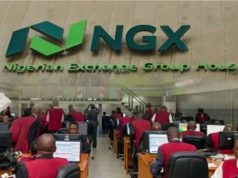By Audrey Lotechukwu
WED 10 FEB, 2021-theGBJournal- The Nigerian Communication Commission (NCC) has called for written submissions from ‘’interested stakeholders’’ on the Capital Structure of Licensees (Licence holders) in the Communications Sector, as it seeks to set fresh parameters that will determine the sanctity of investments, liquidity in operational funding and ensure sustainability of the Industry.
NCC said all submissions must reach the Commission on or before Friday, March 19, 2021.
The Commission said the consultation process is an important part of its rule-making mandate and it is key in creating regulatory frameworks, and expects feedbacks and inputs from all stakeholders.
The planned parameters will be based on determination of an ideal capital structure for each category of licensees and a monitoring mechanism that will ensure that a fair and stable market structure is sustained in Nigeria,’’ the NCC said in a consultation paper it published Monday.
According the NCC, the consultation process will facilitate a regulatory rule-making process as prescribed by Section 71 of the Nigerian Communications Act, 2003.
This process will evaluate the current status of licensees, the approaches in other jurisdictions and the Commission’s key obligation to sustain the market structure.
It is the hope of the Commission that this process will ignite more discussions on the financial and investment health of licensees and possibly develop a long-lasting approach that will create a fair and stable communications sector in Nigeria.
This desire, according to the Commission, is hinged on the recent challenges in the sector and possible impacts on the health and capacity of the market, particularly in the light of dwindling revenue and widespread operational challenges.
Capital structure, refers to the amount of debt and/or equity employed by a licensee to fund its operations and finance its assets (growth). This capital structure is typically expressed as a debt-to-equity or debt-to-capital ratio.
The Commission said it intends to set out an optimal capital structure for its licensees, as the proportion of debt and equity that result in the lowest weighted average cost of capital.
In order to optimize its capital structure, a licensee can issue either more debt or equity and the new capital that is acquired may be used to invest in new assets/infrastructure or may be used to repurchase debt/equity that is currently outstanding, as a form of recapitalization.
The NCC noted that the communications sector, which includes data communication, is experiencing massive growth and expansion all over the world. This rapid expansion is due to the rapid technological advancement and adoption of technology in many functions both at the corporate and individual level, and with the expansion, many opportunities have also risen in the industry leading to increased competition and the need for improved efficiency to remain competitive in the industry.
‘’One of the ways that a licensee can enhance its competitive advantage is by adopting an optimal capital structure. Establishing an optimal capital structure is one of the critical decisions that the managers of an organization have to make,’’ the Commission said.
The Commission recently conducted a review of the financial health of its licensees as a fallout from the systematic crisis faced by some of them, mostly associated with huge indebtedness and huge deficits in shareholders’ funds.
‘’The outcome of the review raised concerns and accentuated the widespread issues on capital structures and unsustainable debt to equity ratios of a substantial number of the licensees,’’ the NCC said.
Twitter-@theGBJournal|email: info@govandbusinessjournal.ng









